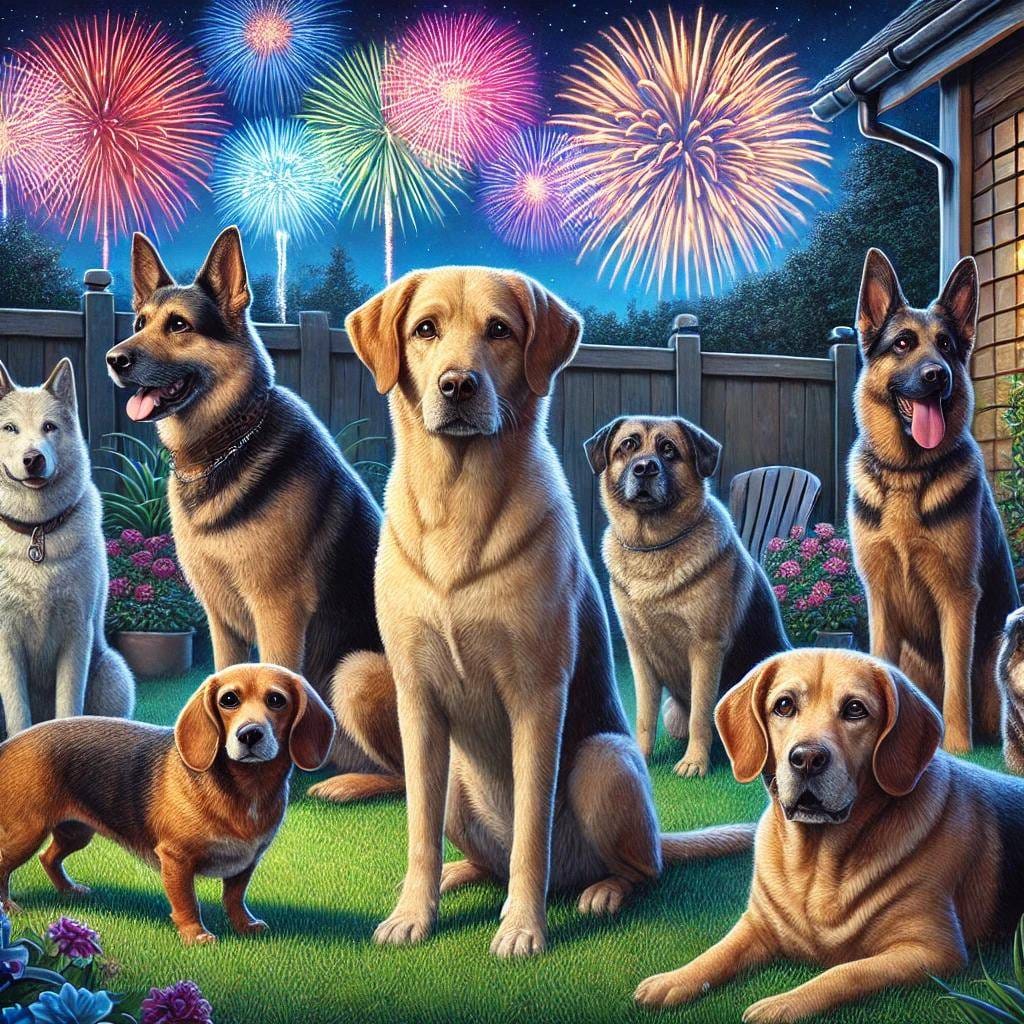
New Year's Eve Without Fear: How to Prepare Your Dog for Firecrackers
Mariasole FerranteShare
Fear of New Year's Eve fireworks is a common problem among dogs, but with the right preventative strategies, it is possible to significantly reduce the discomfort that the noise of fireworks can cause. The key is to intervene before the fear develops, adopting gradual methods that are respectful of the dog's behavior. Here are some tips on how to help your dog prevent fear of New Year's Eve fireworks.
1. Progressive Desensitization to Loud Sounds
One of the most effective techniques for preventing a fear of fireworks is progressive desensitization, which involves gradually accustoming your dog to loud sounds. Start by playing recordings of noises similar to those of fireworks, but at a low volume, during your dog's normal daily activities. The goal is to get your dog to associate these noises with positive experiences, such as play or treats.
Each time the dog remains calm while listening to the sounds, reward him with a small treat or cuddle. As the dog gets used to the sounds, slowly increase the volume of the sounds. The idea is that the dog will gradually get used to them without developing a fear response.
2. Positive Association with Firecrackers
Connecting the sound of bangs to pleasant experiences is another effective way to prevent fear. If your dog gets used to hearing bangs without reacting in a fearful way, you can reinforce this habit with a reward. Use games, tasty treats, or petting sessions right when the bangs are in the distance.
By creating a positive association with the sound of fireworks, the dog learns to perceive them as part of a pleasant experience, reducing the risk of developing a fear associated with these sounds.
3. Familiarize yourself with the external environment
If your dog has had negative experiences with fireworks in the past, it is important to help him feel safe outside. If possible, take him for walks in environments where fireworks noises can be heard (for example, at events or celebrations far from home). Over time, the dog will learn not to associate the noises with danger.
Make sure the walk is calm and positive, perhaps by playing or rewarding the dog, so that he can understand that outside noises are not something to be afraid of.
4. Create a Reassuring Environment at Home
During the weeks leading up to New Year's Eve, prepare your dog by creating a cozy and safe environment where he can retreat. Use an interior room without windows or, if possible, isolate the environment from external noises, closing doors, windows and covering any cracks that could let sounds in. You can also help your dog by turning on the radio or TV.
5. Use of Calming Collars or Clothing
There are calming collars that emit vibrations or a constant gentle pressure, similar to that of a hug, which can have a relaxing effect on the dog. Although these tools are not always effective, they are very useful in addition to other techniques, helping to prevent the onset of fear in the days leading up to New Year's Eve.
6. Consult Expert Figures for Preventive Solutions
If your dog has a predisposition to fear loud noises, consult with experts to find a preventive solution. The trainer can advise you on specific behavioral therapies to prevent the onset of anxiety.
7. Create a Relaxation and Wellness Routine
Keeping your dog relaxed in the days leading up to New Year’s Eve is essential to reducing accumulated stress. Daily walks, play sessions, and positive interactions with your dog can help him feel more at peace. Also, try to avoid situations that could cause additional stress, such as unscheduled visits to the vet or sudden changes in routine.
8. Plan a Reassuring Contact on New Year's Day
On the day of the celebration, try to keep your dog as calm as possible. Not only a quiet environment, but also your presence is essential. Being close to your dog and speaking calmly can help him feel safe. Although it is normal for the bangs to cause some concern, your balanced and reassuring attitude will give the dog the confidence that there is nothing to fear.
